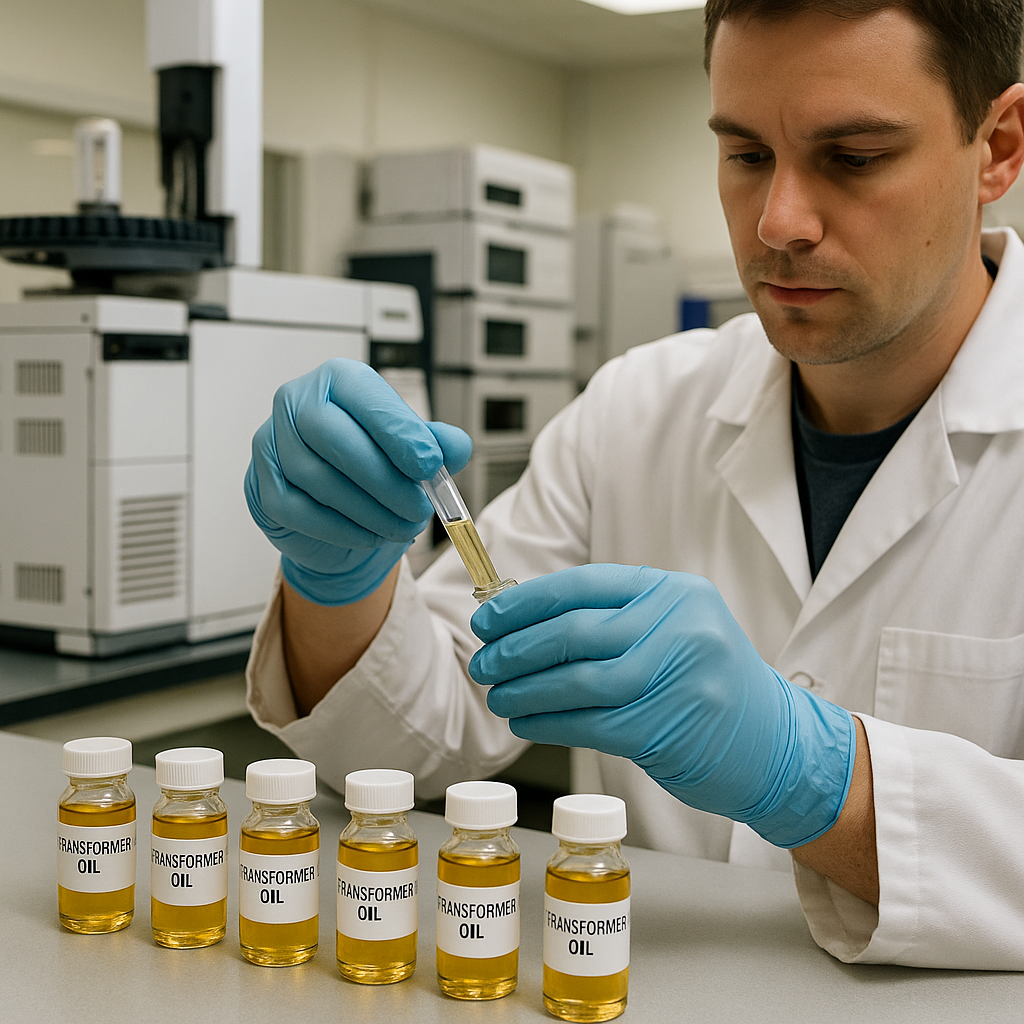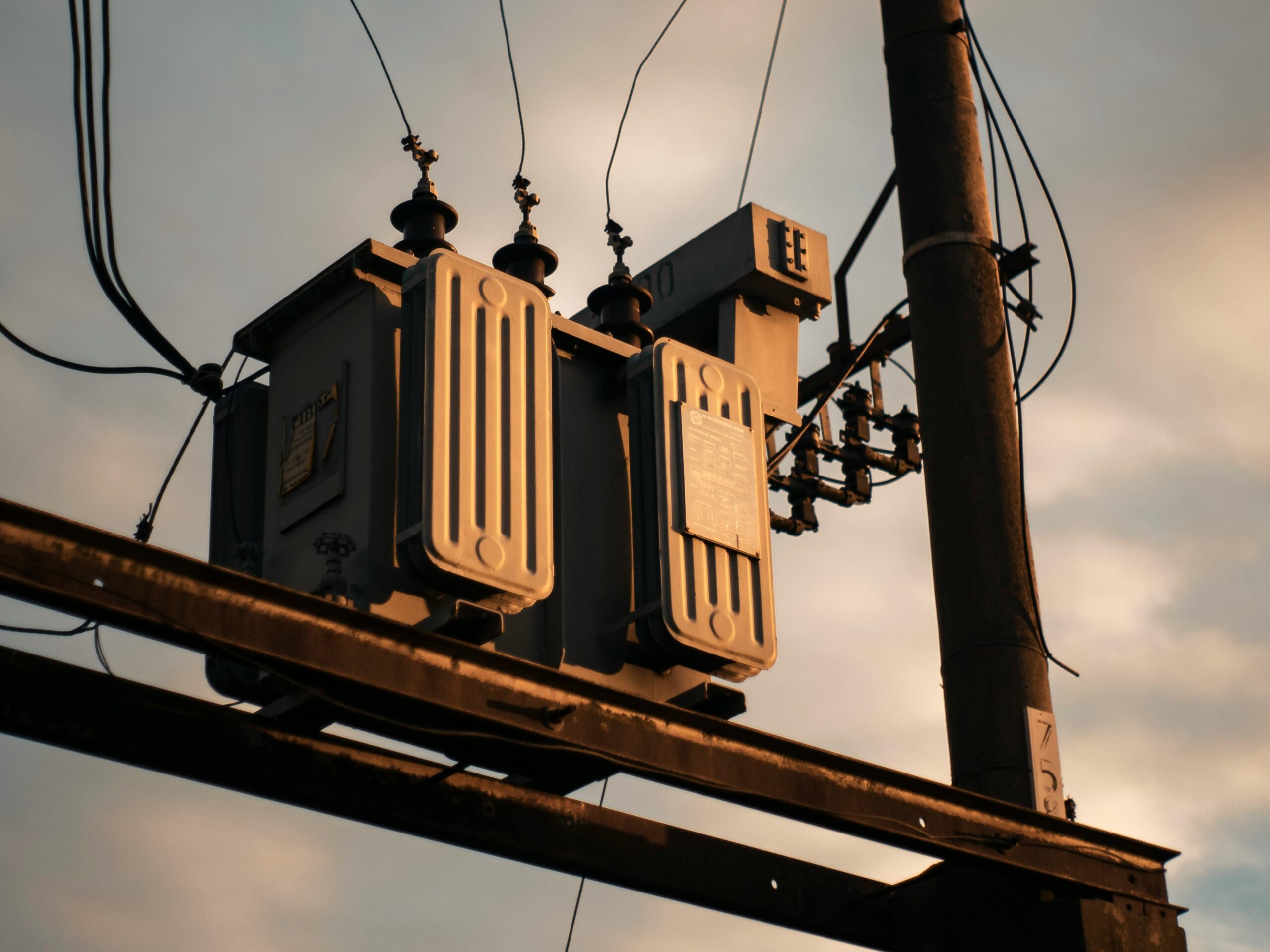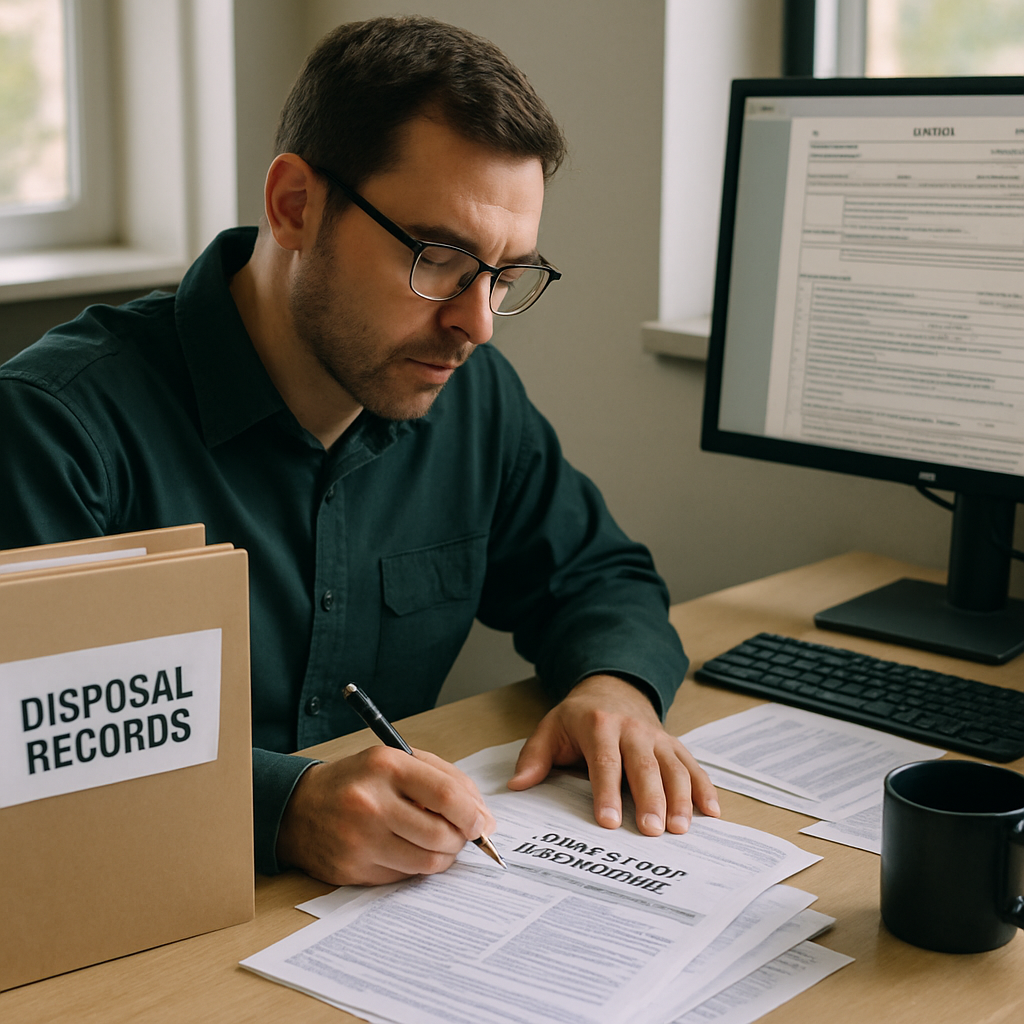5901 Botham Jean Blvd, Dallas, TX 75215
EPA Regulations for Disposing of Electrical Transformers
July 30, 2025The improper disposal of electrical transformers poses significant risks to both human health and the environment. These critical components of our power infrastructure often contain hazardous substances that require careful handling at the end of their operational life. Since the 1970s, the Environmental Protection Agency (EPA) has established comprehensive regulations to address this environmental challenge.
The EPA regulates the disposal of electrical transformers containing polychlorinated biphenyls (PCBs) under the Toxic Substances Control Act (TSCA). These regulations address a class of synthetic chemicals once valued for their stability and fire resistance but later recognized for their persistent environmental toxicity. Key regulations include banning PCBs above 50 parts per million (ppm), requiring proper labeling and registration of PCB transformers, and mandating specific disposal methods such as incineration or decontamination for PCB-containing equipment.
Understanding these regulations is essential for utilities, industrial facilities, and waste management companies that handle electrical transformers. The EPA’s framework establishes clear protocols for testing, classification, storage, transportation, and final disposal of these units based on their PCB concentration levels. Compliance with these regulations not only helps protect public health but also assists organizations in avoiding significant penalties for improper disposal practices.
How are PCB Concentrations Classified and Regulated?

The Environmental Protection Agency (EPA) has established a three-tier classification system for transformers based on their polychlorinated biphenyl (PCB) concentration levels. This system dictates how transformers must be managed throughout their lifecycle.
The EPA regulations specify concentration thresholds that determine the use, maintenance, storage, and disposal requirements for these transformers. Understanding your transformer’s classification is essential for compliance with federal regulations.
PCB Concentration Categories
- Non-PCB Transformers: Contain less than 50 parts per million (ppm) PCBs
- PCB-Contaminated Transformers: Contain 50 ppm or greater, but less than 500 ppm PCBs
- PCB Transformers: Contain 500 ppm or greater PCBs
Transformers manufactured before July 2, 1979, must be presumed to contain high PCB levels unless tested otherwise. If the manufacturing date or dielectric fluid type is unknown, the transformer must be considered a PCB transformer containing 500 ppm or more PCBs.
Regulatory Requirements Based on Classification
The classification of a transformer affects its management. As PCB concentration rises, so does the regulatory burden:
- Non-PCB Transformers (<50 ppm): Subject to minimal regulations; generally used, serviced, and disposed of without special PCB handling.
- PCB-Contaminated Transformers (50-500 ppm): Subject to moderate regulations. They may be serviced only with dielectric fluid containing less than 500 ppm PCBs. Disposal must follow specific requirements.
- PCB Transformers (>500 ppm): Subject to strict regulations, including EPA registration, quarterly inspections, specific marking requirements, and stringent disposal procedures. Since October 1, 1990, the use of PCB Transformers is prohibited in or near commercial buildings unless specific electrical protection measures are implemented.
PCB Testing Requirements
Accurate testing is vital for proper classification and compliance. PCB concentrations must be established through chemical analysis using EPA-approved methods like SW 846-Method 8082 or other approved protocols.
When testing transformer oil:
- Samples must be collected from the transformer while in service to be representative
- Testing should be performed by qualified laboratories
- Results determine the transformer’s classification and applicable regulations
- Documentation of test results should be maintained for at least three years after disposal
If a mineral oil transformer initially assumed to contain less than 50 ppm PCBs is found to have higher concentrations, owners must immediately comply with all applicable regulations, including registration, marking, and appropriate disposal planning.
Implications of PCB Classification
The PCB concentration of a transformer has significant implications for transformer owners:
- Use restrictions: PCB Transformers have strict limitations on their usage locations
- Maintenance requirements: Higher PCB levels necessitate more frequent inspections and stricter record-keeping
- Disposal costs: Higher PCB concentrations generally result in increased disposal costs
- Liability concerns: PCB releases may lead to environmental cleanup obligations and potential legal action
Transformer owners must understand that compliance with PCB regulations is mandatory. The EPA can impose significant penalties for violations, with fines determined based on the nature and severity of the infraction. Proper classification through accurate testing is the first step toward ensuring regulatory compliance.
What are the Key Steps in Legal Transformer Decommissioning?

Decommissioning electrical transformers requires strict adherence to environmental regulations and safety protocols to prevent hazardous material exposure, environmental contamination, and severe legal penalties. Following these essential steps ensures regulatory compliance and minimizes environmental impact.
Step 1: PCB Content Testing and Classification
The first step is determining if the transformer contains polychlorinated biphenyls (PCBs). Certified laboratories test oil samples using EPA Method 8082A or equivalent standards to identify PCB levels above regulatory thresholds.
Transformers with PCB concentrations over 50 parts per million (ppm) are classified as hazardous waste. Even those with concentrations between 2-50 ppm require special handling. Testing documentation becomes part of the permanent disposal record.
Step 2: Regulatory Assessment and Documentation
Once tested, proper documentation must be prepared, including the transformer’s serial number, installation date, PCB content, and physical location. Authorities often require a PCB Equipment Register or Hazardous Asset Log.
Documentation requirements vary by jurisdiction but typically include sampling reports, chain-of-custody logs, and waste classification forms. These documents serve as legal proof of compliance during inspections or audits.
Step 3: Proper Labeling and Marking
Hazardous transformers must be clearly labeled with permanent signs indicating PCB levels, test dates, and emergency contact information.
These labels help prevent mishandling and ensure everyone involved in the decommissioning process understands the hazards. Non-compliant labeling can result in significant penalties.
Step 4: Safe De-energization and Disconnection
Before dismantling begins, the transformer must be completely de-energized. This involves following electrical safety protocols like NFPA 70E. Proper lockout/tagout procedures must prevent accidental energization.
Qualified personnel should verify the absence of voltage and implement grounding measures. All power grid connections must be safely disconnected before proceeding.
Step 5: Oil Drainage and Containment
Transformer oil must be carefully drained into certified containment systems using specialized equipment to prevent spills. Double-containment systems are essential to capture accidental releases.
The drained oil must be labeled and stored in UN-approved containers pending disposal or recycling. Spill kits and emergency response equipment must be available throughout this process.
Step 6: Dismantling and Component Separation
After oil removal, the transformer can be dismantled. External components like radiators, bushings, and arresters are removed first. The tank is then opened to access internal components.
Materials must be segregated by type for proper recycling or disposal. Copper windings, steel cores, and other valuable materials can often be recycled. PCB-contaminated components require special handling.
Step 7: Secure Transport
Transporting transformer components requires proper containment and documentation. Hazardous materials must be transported by licensed carriers using vehicles that meet DOT regulations.
Manifest tracking documents must accompany the shipment from origin to destination. The Basel Convention governs any international transport of hazardous waste, requiring prior informed consent from receiving countries.
Step 8: Environmentally Sound Disposal or Recycling
The final step is proper disposal or recycling of all components. PCB-contaminated materials must be destroyed at high-temperature incineration facilities meeting EPA standards. Oil with lower PCB levels may be decontaminated through specialized treatment processes.
Recyclable materials like copper and steel should be sent to certified recycling facilities. Licensed disposal operators must issue Certificates of Destruction or Recycling as proof of proper handling.
[[artifact_table]] Summary of PCB Classification and Required Disposal Methods [[/artifact_table]]Post-Disposal Documentation
After completion, all disposal certificates, manifest tracking documents, and chain-of-custody logs must be retained. Most regulations require these records to be kept for 3-5 years, though some jurisdictions mandate longer retention periods.
Companies must often submit annual compliance reports outlining all decommissioning activities. These records protect organizations from future liability and demonstrate commitment to environmental responsibility.
What Disposal Methods are Approved by the EPA?
The Environmental Protection Agency (EPA) regulates the disposal of PCB-containing transformers under the Toxic Substances Control Act. Due to the persistence of PCBs and their potential environmental and health risks, only specific disposal methods are approved. These methods depend on PCB concentration levels and the transformer’s condition.
High-temperature incineration is the primary approved method for transformers with high PCB concentrations, requiring temperatures above 1200°C to destroy PCB molecules entirely. The heat breaks down the chemical bonds of PCBs, preventing toxic residues from forming. This method is effective for transformers with PCB concentrations of 500 ppm or greater.
Chemical dechlorination is another EPA-approved disposal method. It uses chemical reactions to remove chlorine atoms from PCB molecules, rendering them non-toxic. This process can sometimes be performed on-site, reducing transportation risks associated with moving hazardous materials. It works best for transformers with moderate PCB contamination and can be more cost-effective than incineration for certain applications.
For transformers with lower PCB concentrations (50-499 ppm), decontamination for reclassification is sometimes allowed. This involves draining the fluid, flushing the transformer with a solvent, and refilling it with non-PCB fluid. The drained PCB liquids must be properly disposed of through incineration or chemical treatment. This method allows for reusing the transformer shell instead of complete disposal.
The EPA mandates that all PCB disposal activities occur at approved facilities that meet strict environmental and safety standards. These facilities undergo regular inspections to ensure compliance with federal regulations and must have proper containment systems, monitoring equipment, and safety protocols for handling PCB materials safely.
Several factors are crucial when selecting a disposal method. The PCB concentration within the transformer is the primary factor, with higher concentrations requiring more intensive methods like incineration. The transformer’s condition also matters, as damaged units may present additional hazards. The availability of disposal facilities in the region often influences the practical options available.
All transformers containing PCBs at concentrations of 50 ppm or greater must be documented throughout the disposal process. This includes manifests that track the transformer from the original location to the final disposal facility. These records ensure accountability and verify compliance with EPA regulations.
Proper disposal of PCB transformers has significant environmental benefits. It prevents these chemicals from entering soil and water systems, where they can accumulate in the food chain, and protects groundwater from contamination that can affect drinking water supplies. The careful management of these materials is an important aspect of environmental stewardship in the recycling and waste management industry.
What Documentation and Reporting is Required?

Proper documentation is essential for EPA compliance in handling PCB waste. The EPA strictly oversees PCB disposal through documentation that tracks these hazardous materials from cradle to grave.
Organizations involved in disposing of PCB-containing materials must maintain critical documents to demonstrate regulatory compliance. These records evidence that PCBs have been properly identified, transported, and disposed of according to federal standards.
Essential Documentation for PCB Compliance
The EPA mandates specific documentation for PCB waste management. Failure to maintain these records can lead to significant penalties. Key required documents include:
- PCB Test Reports: Laboratory analyses that document PCB concentrations in equipment, oil, or other materials
- Waste Classification Forms: Documentation identifying the type and category of PCB waste
- Transport Manifests: EPA Form 8700-22 tracking the movement of PCB waste from generation through disposal
- Certificates of Disposal: Formal documentation confirming the proper destruction of PCB waste
- Annual PCB Activity Reports: Summary of PCB handling activities for the year
These documents create an unbroken chain of custody, allowing regulators to verify compliance throughout the disposal process.
Manifest Requirements
Transport manifests are crucial, forming the backbone of the PCB tracking system. According to 40 CFR Part 761 Subpart K, generators must include detailed information on manifests, such as:
- Identity of PCB waste
- Earliest date of removal from service
- Weight of PCB waste in kilograms
- For transformers: serial numbers or other identification, removal date, and weight
- For capacitors: serial numbers or identification, removal date, and weight
The manifest must accompany the PCB waste during transport, with signed copies retained by each party involved in the waste transfer chain.
Record Retention Requirements
Transformer owners and PCB waste generators must keep records for at least three years after disposal. Some documents, particularly annual records, may need to be retained longer under specific circumstances.
These records must be organized, accessible, and available for EPA inspection upon request. Electronic records may be acceptable if they meet EPA requirements for data integrity and accessibility.
Certificate of Disposal
Disposal facilities must provide generators with a Certificate of Disposal within 30 days of completing PCB waste disposal. This certificate must include:
- The disposal facility’s name, address, and EPA ID number
- The identity of the PCB waste disposed, referencing the manifest number
- A statement certifying the disposal of the identified PCB waste
- The date(s) of disposal
- The disposal method used
Generators must retain these certificates as proof of proper disposal.
Exception Reporting
If a generator does not receive a copy of the manifest with the disposal facility’s signature within 45 days of waste shipment, they must contact the transporter or disposal facility to determine the waste’s status. If the signed manifest is not received within 60 days, generators must submit an Exception Report to the EPA Regional Administrator.
Similarly, a One-Year Exception Report is required if PCB waste is not disposed of within one year of removal from service.
[[artifact_table]] PCB Documentation Retention Requirements [[/artifact_table]]Thorough and accurate record-keeping not only ensures regulatory compliance but also provides critical information for environmental stewardship. Establishing robust documentation systems protects organizations from potential liability while contributing to the safe management of these persistent environmental contaminants.
Conclusion: Ensuring Compliant and Environmentally Responsible Transformer Disposal

Proper disposal of electrical transformers is essential for both environmental protection and regulatory compliance. Organizations handling end-of-life transformers must adhere to complex regulations while minimizing environmental impact. By understanding EPA guidelines, correctly classifying PCB content, following approved disposal methods, and maintaining thorough documentation, businesses can safely and legally manage transformer disposal while safeguarding ecosystems and human health.
Environmentally responsible transformer disposal helps avoid regulatory penalties and supports sustainability goals through the recovery of valuable materials like copper, steel, and aluminum. For expert guidance on compliant transformer disposal that adheres to both regulatory requirements and environmental best practices, contact Okon Recycling at 214-717-4083.
